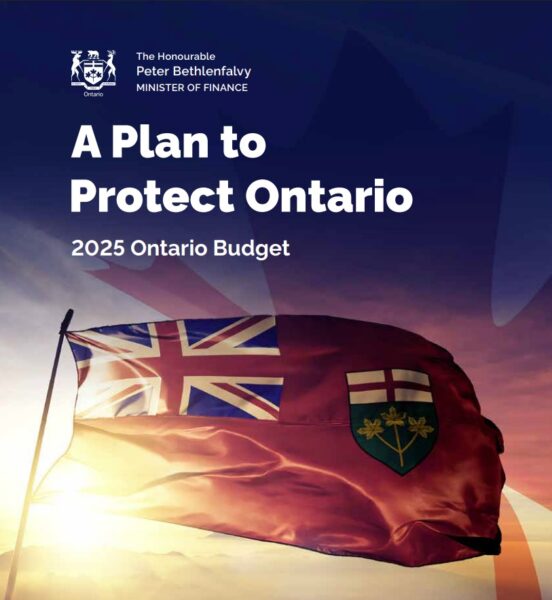
Last week’s much anticipated 2025 Ontario Budget comes at a time when Brampton is straining under the weight of its own success. We are among the fastest-growing urban centres in the country, with a young, diverse population and an entrepreneurial spirit that powers nearly every sector of the provincial economy.
Brampton’s growth story however, risks stalling unless the provincial government recognizes and responds to our specific needs, particularly in affordable housing, skilled labour, and postsecondary education. This year’s budget takes some positive steps, but in critical areas, it still leaves Brampton on the sidelines.
The Brampton Board of Trade and our business community are eager to partner with the Province of Ontario to make this a budget that works – not simply through consultation but through co-creation. Below are some observations of the impact of the budget to Brampton and how we might work together to truly unlock our potential.
Housing: A Plan Without a Path to Affordability
While the province is falling behind on its housing targets, Brampton is taking meaningful steps toward meeting our provincially mandated goal of 113,000 new homes by 2031. Despite strong momentum, we still face a long road ahead to get more housing online at the scale and speed required. That’s because building homes isn’t just about permits and shovels—it’s about the foundational infrastructure and by-law capacity that make development feasible in the first place.
The province’s recent $1.8 billion commitment to water and servicing infrastructure is a positive step, but it must be seen in context. Spread across potentially dozens of municipalities, the funding is limited—and Brampton, given its disproportionate growth and the recent leadership at the municipal level regarding problematic landlords, Brampton requires larger, more acute provincial support.
In addition to substantial investments in infrastructure and by-law enhancement, the Province also must recognize that support is needed for addressing labour shortages, construction costs, and soaring land prices, and without that Brampton cannot deliver the volume or affordability of housing that our residents urgently need.
The budget also does little to support the development of the “missing middle”, family-sized, purpose-built rental and ownership housing that Brampton desperately needs. Without targeted incentives or regulatory reform to speed up approvals, especially for infill development, we’re at risk of falling behind. The data is clear that young families are looking to move out of Peel Region to more remote parts of Ontario, but still commuting into the GTA for work, placing strain on local infrastructure without the tax base to support it. If we wish to have young people stay in our community, we need to provide affordable options for living here.
How BBOT Can Partner with the Province:
- Work with the Ministry of Municipal Affairs and Housing to design targeted incentives for medium-density and rental housing in Brampton, tied to local planning priorities and shovel-ready projects
- Collaborate with Infrastructure Ontario and CMHC to convene local developers and builders around a Brampton-specific affordability strategy, including land assembly, permitting acceleration, and development charge reforms
Skilled Labour: A Growing Bottleneck
Ontario’s $100 million annual commitment to the Skills Development Fund is helpful but it barely scratches the surface in Brampton, where talent gaps are affecting construction, logistics, health care, food services, and advanced manufacturing.
Brampton is uniquely positioned to lead on workforce development. We are home to a highly educated immigrant population, many of whom face regulatory barriers to employment in their fields. Yet, there are no new provincial initiatives in this budget to streamline international credential recognition – one of the most practical solutions available to close labour gaps quickly.
Further, too few young people are entering in-demand trades, even as the demand for skilled workers grows exponentially. This, combined with increasing unemployment and the recent layoffs of over 30,000 workers in the advanced manufacturing sector across the province make skills training a crisis.
How BBOT Can Partner with the Province:
- Expand the Brampton Talent Task Force in partnership with the Ministry of Labour, Training and Skills Development to better align immigration, credentialing, and labour market needs
- Pilot a fast-track credential recognition hub in Brampton, focused on healthcare, engineering, and construction trades – building on the city’s newcomer population and Sheridan’s Centre for Skilled Trades
- Help expand employer participation in the Ontario Youth Apprenticeship Program (OYAP) through direct outreach to our member businesses
Postsecondary Education: Brampton Can’t Keep Waiting
With 70% of our population under age 45 Brampton’s population is young, growing, and poised to fill the jobs of tomorrow but we remain underserved by the province’s higher education system. With the average postsecondary student in Ontario costing less to educate than anywhere else in the country, the lack of new operating funding in this budget is a missed opportunity.
For years, Brampton has advocated for stronger local access to postsecondary education. Sheridan College continues to deliver excellent programs here, and institutions like Algoma University and Toronto Metropolitan University are leading in innovation while expanding their presence in the city. But they are doing so in a financial environment that is increasingly uncertain.
Ontario’s universities and colleges are the lowest funded in Canada on a per-student basis. Many are already operating with structural deficits. While the government’s $1.3 billion Postsecondary Education Sustainability Fund will provide some relief, it does not address the underlying problems: an outdated framework that prevents growth through domestic enrollment, inadequate core funding, and a lack of capital investment for growing communities like ours.
How BBOT Can Partner with the Province:
- Convene an Education Futures Roundtable with the Ministry of Colleges and Universities to chart a path toward scalable, applied education that meets Brampton’s workforce demands
- Help facilitate industry placements and co-ops through local employers, linking education to jobs with a Brampton-first strategy
Revenue Projections: A Fragile Foundation
The province is banking on 1.9% economic growth and a recovery in housing starts to drive revenue over the next two years. But these forecasts rest on a series of best-case assumptions: interest rates falling, inflation staying low, and global supply chains stabilizing.
With a $14.6 billion deficit forecasted this year, and large bets on future private-sector investment, the risk is that if these conditions don’t materialize, municipalities like Brampton will be left holding the bag.
Further, by making the Ontario’s gasoline tax and fuel tax cuts permanent in spite of the removal of the federal carbon tax the province is denying itself critical revenues.
We urge the province to be cautious. Budgeting based on optimism may make headlines today, but it creates fiscal instability for tomorrow.
Some Wins Worth Celebrating
There are aspects of the budget that serve Brampton well:
In terms of economic development, the measures to improve tariff relief and support Ontario businesses are welcome. They signal a recognition that Ontario’s competitiveness must be protected in a global economy.
Enhancing and expanding the Ontario Made Manufacturing Investment Tax Credit from 10% to 15% will help businesses manage costs and encourage investment during an uncertain period. Further, the creation of the Protecting Ontario Account with it’s $5 billion of supports for strategic sectors facing tariff-related interruptions in combination with the deferral of provincially administered taxes for six months will help businesses keep workers employed and act as a necessary safety-net for the many Brampton-based businesses in the manufacturing, processing, and logistics sectors that form our economic base.
Further, the province’s ongoing commitment to transit infrastructure – including funding for the Hazel McCallion LRT extension through downtown Brampton and progress toward two-way, all-day GO service on the Kitchener line is critical. These investments will reduce congestion, improve mobility, and support our local economy.
Finally, the $46 million committed over three years to improve public safety in the GTA is welcome, especially as cities like Brampton grapple with growing populations and rising emergency response demands.
We’re Ready to Work
Brampton stands ready to be a full partner in building a stronger, more prosperous Ontario through shared accountability, bold action, and a commitment to co-creating solutions that meet the needs of our rapidly growing and diverse community. The challenges we face in housing affordability, skilled labour shortages, and limited postsecondary access are not unique, but their impact is especially acute in a city like Brampton, where growth has outpaced infrastructure and investment. The Brampton Board of Trade remains committed to working hand-in-hand with the Province of Ontario, our municipal leaders, postsecondary institutions, and private sector partners to turn opportunities into real outcomes. We are not asking for special treatment, but rather for strategic collaboration. Brampton’s success is Ontario’s success, and we are ready to do our part.
